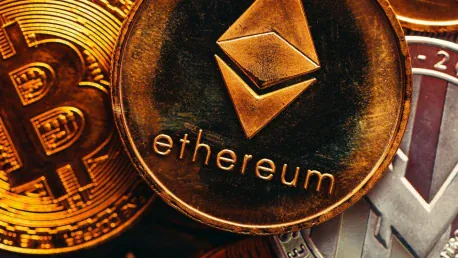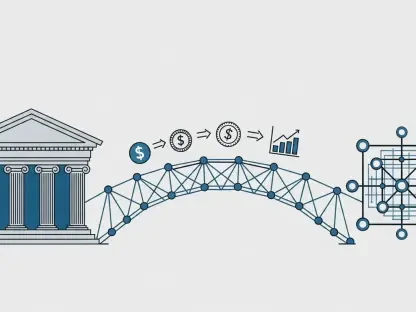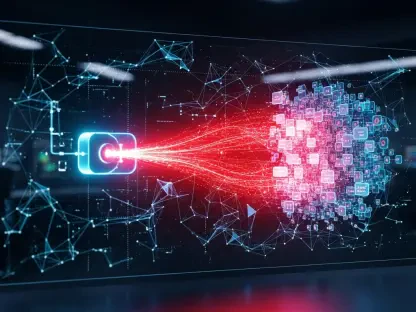Tokenization, the process of creating digital representations of traditional assets, has emerged as a revolutionary trend in the financial industry. This innovation leverages blockchain technology to bring assets such as equities, bonds, real estate, and various financial instruments into the digital realm through blockchain-based tokens. Unlike the volatile cryptocurrencies, tokenized real-world assets (RWAs) are managed on regulated platforms, adhering to global securities regulations while integrating Decentralized Finance (DeFi) applications to enhance their performance and utility.
Benefits of Tokenization in Finance
Operational Efficiencies and Return Profiles
Tokenization of real-world assets is gaining significant traction among industry leaders like BlackRock, Hamilton Lane, and JP Morgan, who recognize the operational efficiencies and unique return profiles these digital tokens offer. By representing traditional assets on a blockchain, tokenization can streamline processes, reduce operational costs, and increase transparency and security in transactions. This has attracted considerable interest from financial institutions seeking to optimize their operations and offerings.
Additionally, these tokenized assets present a unique return profile compared to traditional investments. They offer portfolio diversification and the potential for stable returns, making them appealing for investors who seek to balance risk and reward. Unlike speculative cryptocurrencies that are subject to extreme volatility, RWAs provide a more predictable and stable investment option. This stability is particularly attractive to institutional investors and financial advisors looking to diversify their clients’ portfolios with innovative yet reliable assets.
Accessibility and Broader Participation
One of the most significant advantages of tokenized assets is their ability to lower entry barriers for investors. Traditionally, investments in certain asset classes, such as real estate or pre-IPO equity, required substantial capital, limiting participation to a select group of wealthy individuals or institutional investors. However, tokenization has democratized access to these investment opportunities by enabling fractional ownership. Investors can now purchase smaller portions of assets, making it feasible for a broader audience to participate.
This democratization of investment opportunities is further exemplified by traditional financial offerings moving on-chain. Notable examples include Hamilton Lane’s Secondary Fund VI and BlackRock’s USD Institutional Liquidity Fund, which have embraced tokenization to offer their products at lower minimum investments. This has not only opened up new avenues for individual investors but also allowed for more granular rebalancing of portfolios. Financial advisors can now offer their clients access to a variety of assets that were previously difficult to enter, enhancing overall portfolio diversification and catering to different asset allocation preferences, especially among younger, crypto-savvy investors.
Performance and Stability of RWAs
Comparing Returns and Mitigating Volatility
When evaluating the performance of tokenized real-world assets, it’s essential to understand their role in mitigating the volatility often associated with cryptocurrencies. While RWAs do not promise the high returns that speculative cryptocurrencies might offer, they provide portfolio stability and access to previously difficult-to-enter asset classes. This is particularly relevant in turbulent market conditions where traditional cryptocurrency markets may experience significant fluctuations.
A notable illustration of the stability of RWAs is the hypothetical security token bundle tracked by the Security Token Market’s (STM) RWA Securities Market Update. This bundle outperformed the CoinDesk 20 Index (CD20) during August 2024, highlighting the potential of RWAs to provide more consistent returns. While the CD20 experienced a 14.45% loss during that period, the security token bundle saw a modest gain of 3.03%. This performance underscores the utility of RWAs in weathering market volatility and enhancing portfolio resilience.
Enhancing Portfolio Yields and Stability
Tokenization, a groundbreaking trend in the financial sector, involves the digital transformation of traditional assets using blockchain technology. This process allows assets like stocks, bonds, real estate, and various financial instruments to be represented as blockchain-based tokens. Unlike volatile cryptocurrencies, tokenized real-world assets (RWAs) are traded on regulated platforms and conform to global securities laws, ensuring a safer investment landscape. By utilizing Decentralized Finance (DeFi) applications, these tokenized assets gain enhanced performance and broader utility, merging the reliability of traditional finance with the advantages of blockchain innovation. This fusion brings increased liquidity, transparency, and accessibility to assets that were once limited by cumbersome processes. As a result, investors can now engage with a wider array of assets in a more flexible and efficient manner. The adoption of tokenization signifies a shift towards a more integrated financial ecosystem, encouraging greater participation and innovation in financial markets.









